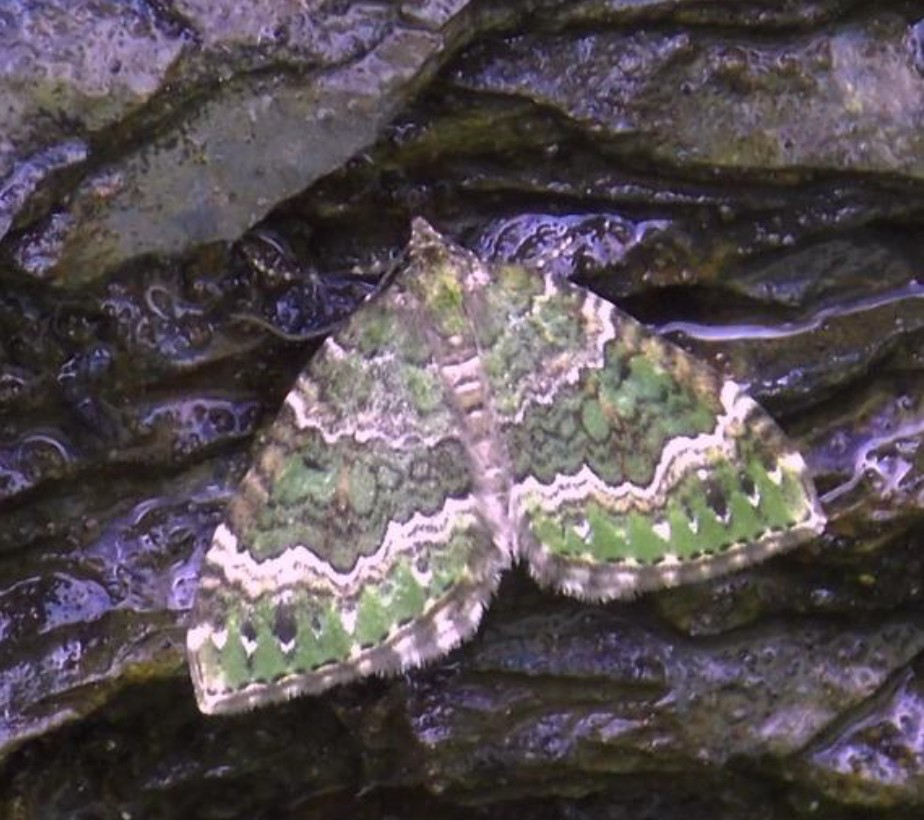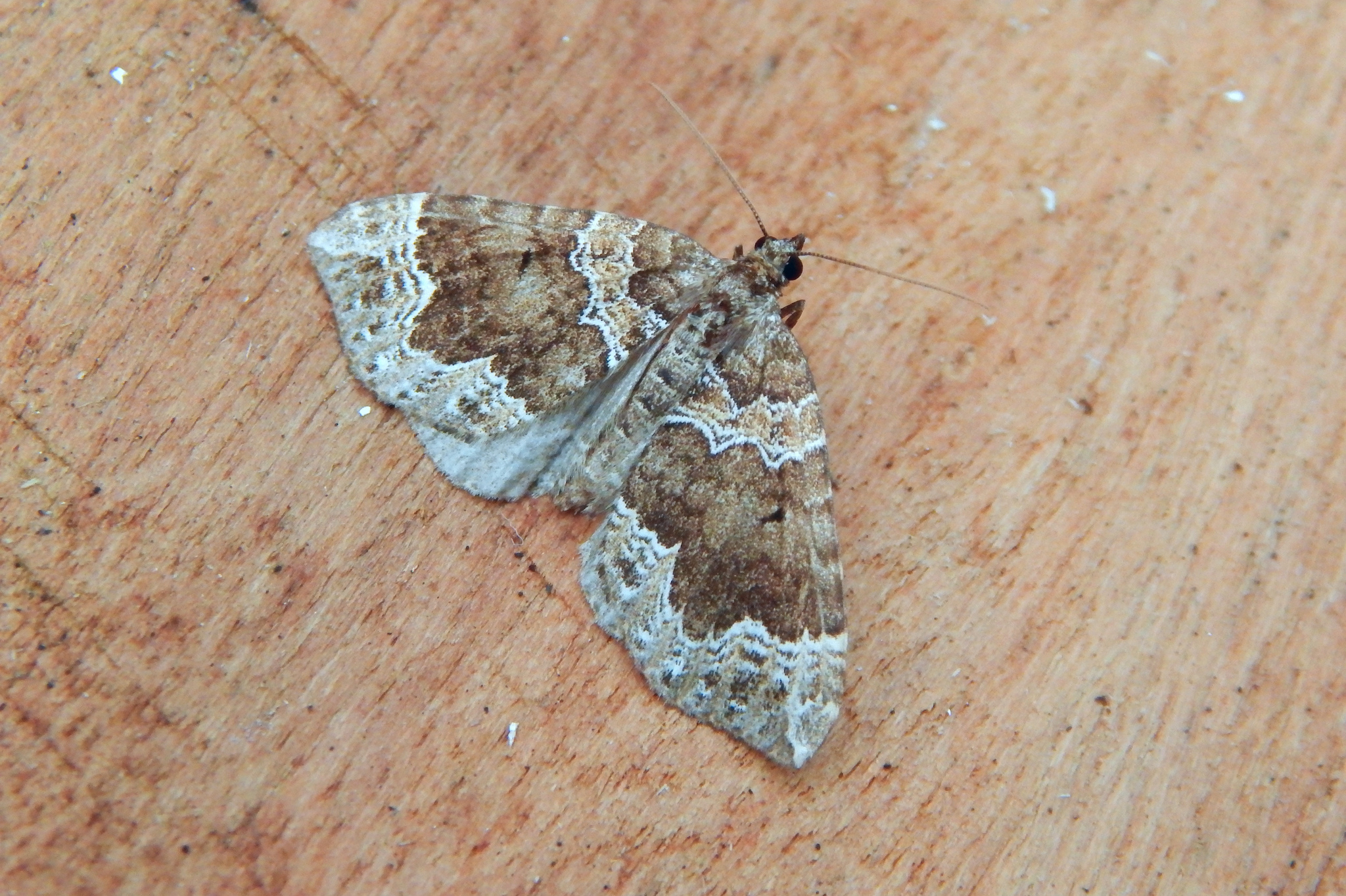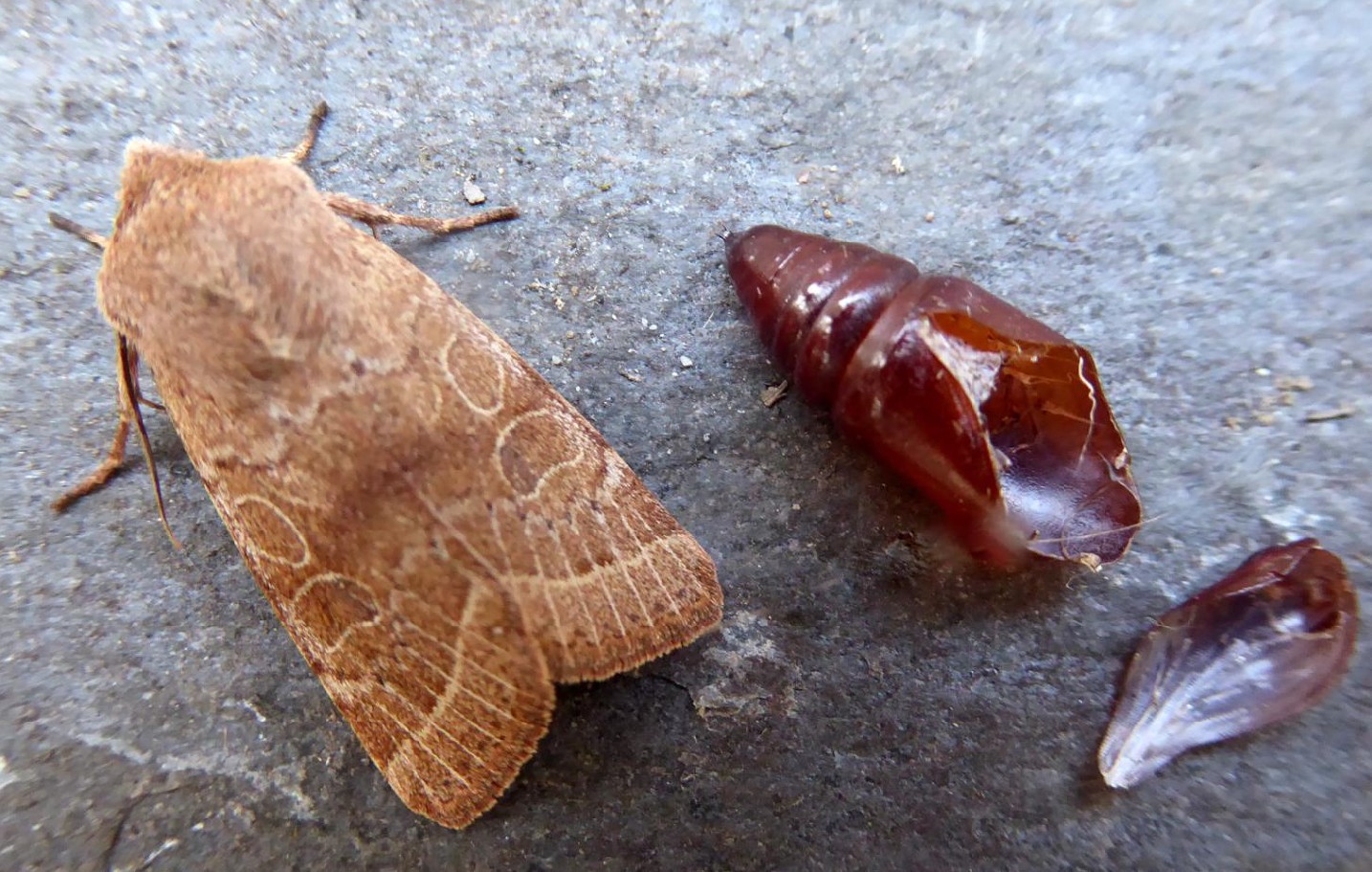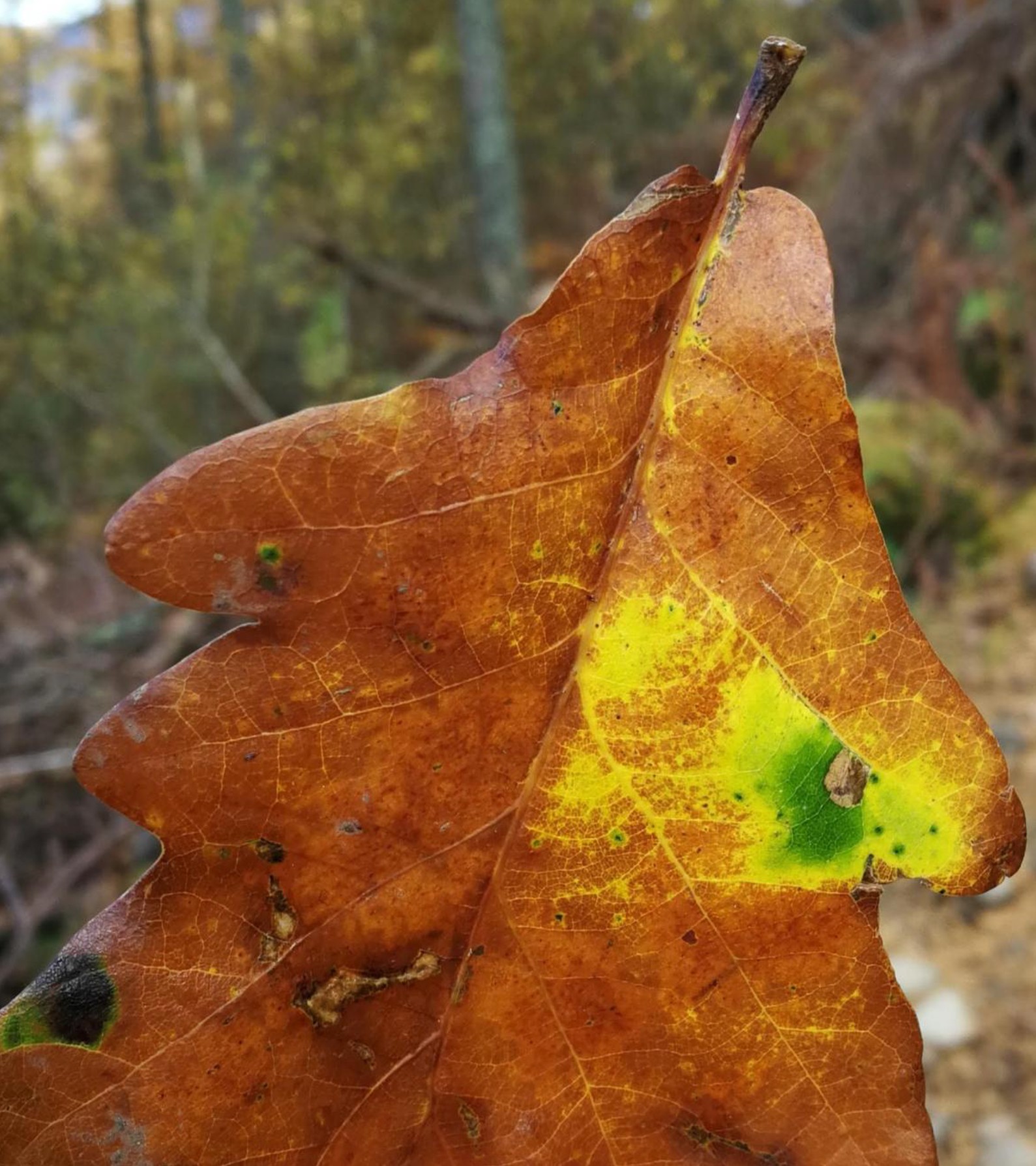A photograph sent to me of a very recently emerged Beech-green Carpet was enough to make me think more about this relatively unfamiliar moth. The key feature is its olive-green colouration which gradually fades as the adult moth ages to become pale brown. However, the very distinct, white edged, dark band across the forewings does allow this species to be identified even after being on the wing for some time. Moths have been seen in July but most records come from August with some during September. The eggs laid on the food plant (several species of bedstraw) produce caterpillars which hibernate while small and start feeding again in spring. The full grown caterpillar is quite ‘stout’ for a geometrid with a wrinkled yellow-brown body with longitudinal grey-brown stripes and a scattering of tubercles each with a short bristle.
There are over 35 records from D&G with most of these from Mabie Forest although there are others from various other sites (only one 1903 record from Wigtownshire). In the UK this moth is very local in the south of England and associated with basic soils but becomes more frequent further north. In Scotland there are records throughout the mainland although absent from the Central Belt and more common north of Perth. This woodland and moorland species maybe one of those which doesn’t come to light readily (66% of our records are of moths disturbed during the day) and therefore might be under-sampled? Now is the time to look out for it!




